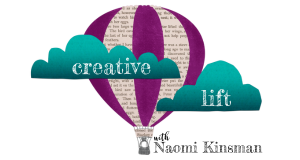Step Into Your Character’s Shoes
Take on your character’s mindset and play through a scene in a variety of ways.
Style
Inventor
Skill
Improvisation
Time
10 minutes
THE STUDIO:
Step Into Your Character’s Shoes
Many writers have the experience of “hearing” their characters speak once they settle into the flow of a drafting session. Improvisation can be another quick way to tap into this powerful emotional connection with our characters. For me, flow can be an elusive state to find when I’m writing, but improv allows me to tap into that mindset much more predictably.
In this game, you’ll take on your character physically and through that connection, tap into their emotions, perspective, and intuition.

Materials
Step Into Your Character’s Shoes
- Space to move
- Paper
- Pen
1. Stand up and shake out your body. Loosen up and begin to walk around your open space.
2. Take on your character’s body layer by layer, starting with your feet. Imagine a typical day, and what your character might be wearing, how that clothing affects how they move, and what emotion they might feel.
2. As your character, imagine you’re walking to a location where you’ll talk with someone you trust. Be specific about that location, the person, and the timing of this moment. Choose a moment after the scene you’re about to write. Your character will tell the story of what happened to this trusted friend.
3. Using past tense, your character will explain what happened, and how they felt about it. Let your character be as animated as possible. Maybe they stand up while recounting this story, and tell it almost as though they’re reliving it. Choose a method of retelling that feels believable for your character, but make sure they engage emotionally, not just intellectually, in the retelling.
4. Once you finish the telling, pause, and consider the other character. What might they ask? Answer at least one question and note what you discover.
5. Now, it’s time to decide. Would you like to improvise the story again, taking it in a new direction? You may have felt some moments ringing true, while others felt a little off. Review those problem areas and consider what changes might help. Do you need to add a character, change the setting, or add an action? Did your character express an emotion you aren’t sure they’d actually feel? What shifts need to be made?
6. Either play through the scene again, or sit down with your fresh inspiration and write.
Try On Other Creative Styles
The Who, What, & Where Experiment
FOR ARCHITECTS
Use this structured improv game to experiment with options for your next scene.
Improvise the Highlights
FOR SPECIAL AGENTS
Use this quick-thinking improv game to identify key moments in your scene and shortcut the experimentation process.
Improvised Storytelling
FOR COLLABORATORS
Create a collaborative scene with a partner, using their questions to help you better understand your main character’s point of view.





